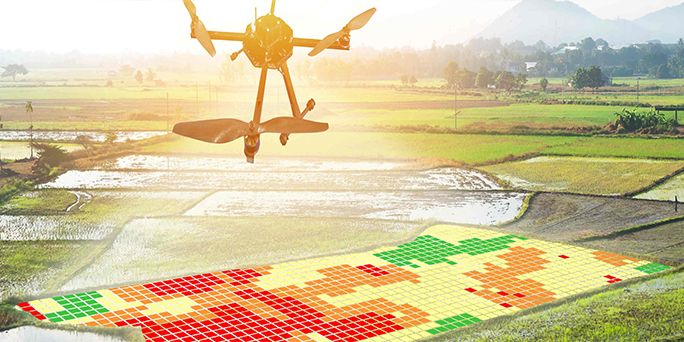A short story about LiDAR technology

The LiDAR prototype was built in 1961 by Hughes Aircraft Company. The company had also built the first laser a year earlier. LiDAR systems and their uses really became known during the Apollo 15 mission of 1971 which used it to map the Moon. After, the scientific uses of LiDAR continued to evolve. Scientific research at universities such as Stuttgart in Germany has proven the accuracy of this system and the evolution of LiDAR was just beginning.
The growth
In the mid-1980s, GPS satellite communication reached its full configuration, which allowed the technology to be more and more precise. At the turn of the 90s, this allowed manufacturers of laser scanners to build LiDAR sensors which were capable of producing 2,000 to 25,000 pulses per second.
Although primitive compared to today’s instruments, these instruments were robust enough to guarantee the great growth that LiDAR technology was on the way to becoming.
How does LiDAR work?
Modern LiDAR technology is made up of laser sensors that are deployed from the air or via portable units, such as drones. When the lasers point to the mapped area, they emit short light pulses. These light pulses are then reflected on the surrounding objects and are recorded. The time between the output laser pulse and the reflected pulse can be used to deduce the distance at which the object is located as well as several other technical data about the object.
Used in many ways
Since its invention, LiDAR has been used in many revolutionary applications such as autonomous cars, unmanned aerial vehicles, robotics, security, etc. The use of Lidar on autonomous cars undoubtedly marks the greatest technological advance since its invention. Although Lidar technology is not yet optimal for electric cars, it will continue to improve over the years.
LiDAR’s market
The LiDAR market was valued at $ 2.25 billion in 2019 and is expected to reach $ 4.61 billion by 2025. North America is dominating the LiDAR market, due to the growing demand for 3D imaging technology in the United States and Canada. In addition, government agencies are keen on LiDAR technology, which should fuel the market growth. Growing investments by giants like General Motors, Google Inc. and Apple Inc. in autonomous cars offer new opportunities for small LiDAR systems that are versatile and available at low cost.
LiDAR technology is still in its beginnings, but it will continue to surprise us over the years. Who knows, maybe it will allow cars to fly!
